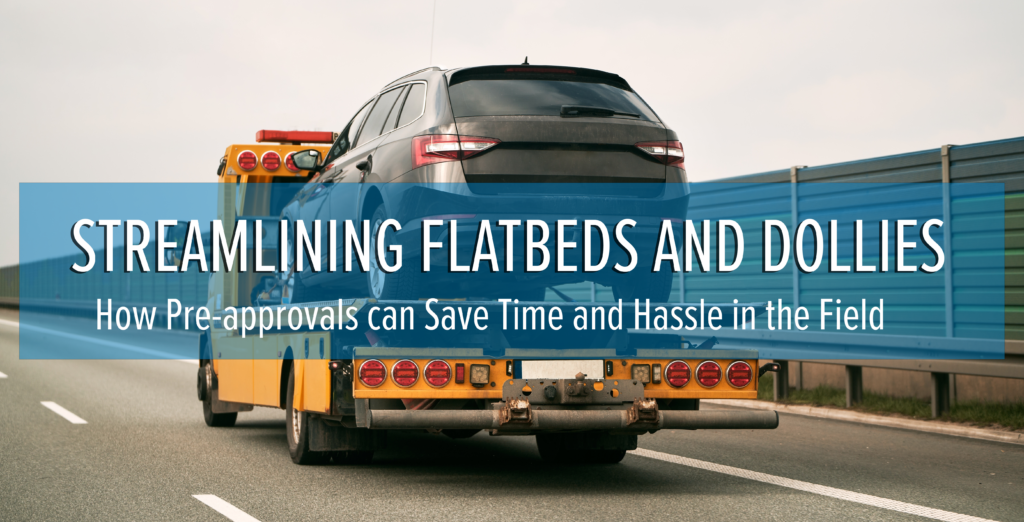
Streamlining Flatbeds and Dollies: How Pre-approvals can Save Time and Hassle in the Field
In order for industries and companies to remain competitive, it is necessary for them to evolve. The repossession industry is no exception. Along with technological advances, we find procedures are also subject to evolve. One such example is the process of recovery agents obtaining lender approvals for the use of flatbeds and dollies. Prior to the pandemic, standard practice was for an agent to receive an assignment from a lender or forwarder to repossess a vehicle. Once the agent located the vehicle, they would assess if the vehicle could be lifted by a single axle and then towed. If determined towing via a single axle was not possible, then the agent would have to utilize a dolly or flatbed to load the entire vehicle on in order to extract it. Even if the agent was equipped and capable of this, an increase in cost would require approval from the lender. This led to additional back-and-forth communication between the agent and lender, often resulting in the loss of valuable time from the agents having to wait for approval. Furthermore, since the agents had to wait for approval, they would move on to other jobs. As you can imagine, this resulted in many missed opportunities to retrieve vehicles.
In an effort to solve the issues surrounding flatbed and dolly approvals, a process was implemented where agents would receive pre-approval prior to the assignment. This process change reduced the additional time-consuming communications between agents and lenders, and allowed for agents to recover vehicles immediately upon locating them.
While advantageous, this process had not yet become mainstream practice among all lenders. That is, until circumstances forced lenders to adopt it. Upon the rise of the Covid-19 pandemic, lenders began to embrace the pre-approval process. Doing so provided the added benefit of reducing the amount of potential contact agents had to have with debtors. Additionally, during a time where automotive retrieval became a volatile industry, this process ensured agents received payment for their services. The additional fee associated with flatbeds and dollies became incorporated into a single “Equipment Fee,” thus allowing for agents to receive fair payment regardless if a flatbed or dolly was required for their assignment. This practice has proven itself to be so beneficial that around 80% of lenders have implemented it into their repossessions. This resulted in a win-win for both the lender and the agent.
Due to the success of streamlining pre-approvals during the pandemic, lenders continued to apply pre-approvals going forward. However, a new purpose surfaced, further proving pre-approvals to be worthwhile. Electric Vehicles (EVs) have gained massive popularity over the past few years. However, EVs present a potential challenge to agents that was previously only seen with some 4WD and AWD vehicles: e-brakes that lock all four wheels.
E-brakes that lock all four wheels raise issues for repossession since agents are incapable of lifting the vehicle by either axle with a traditional hook. If attempted, this can cause damage to the vehicle stemming from the brake still being applied to the wheels remaining on the ground while being towed. In this situation, a dolly or flatbed is required in order to lift the entire vehicle, again solidifying the practicality of pre-approval for the assignment.
As repossessions continue to reach pre-pandemic levels, flatbed and dolly pre-approvals have demonstrated to be a successful process improvement for lenders, forwarders, and repossession agents. This goes to show just how valuable seemingly small adjustments can be when applied on a large scale.
